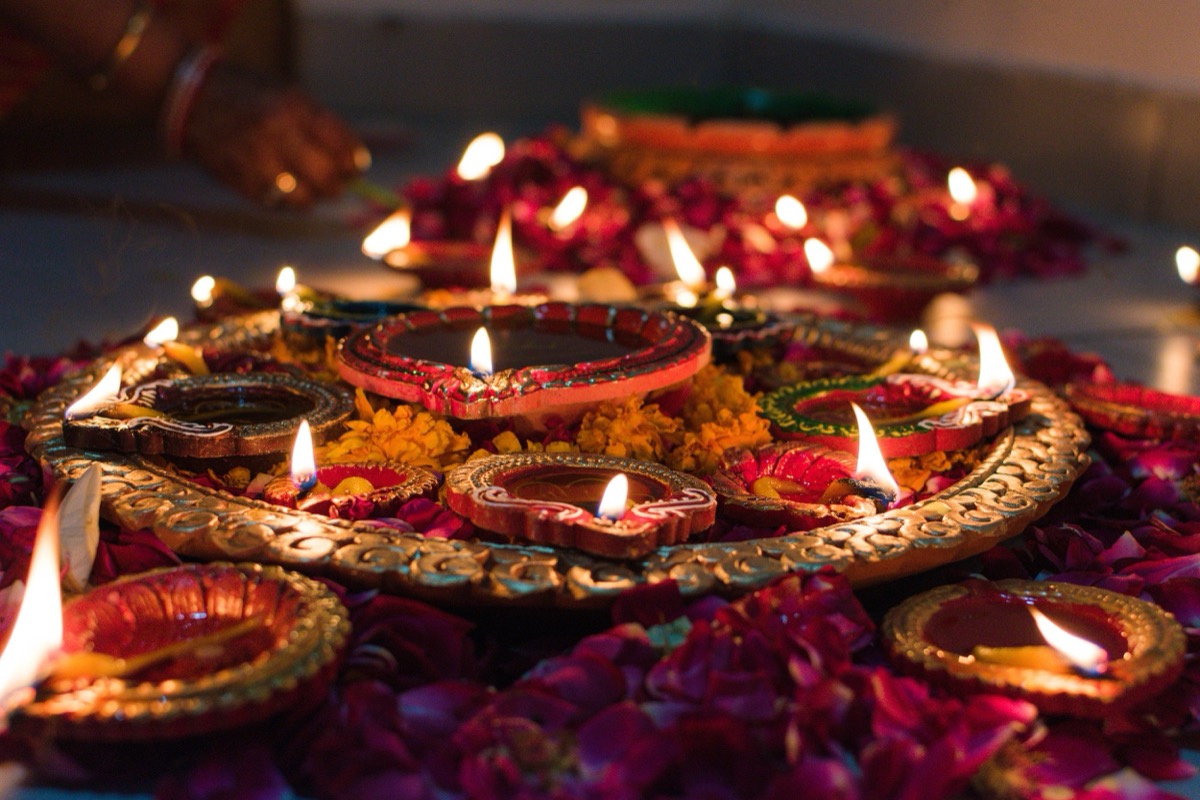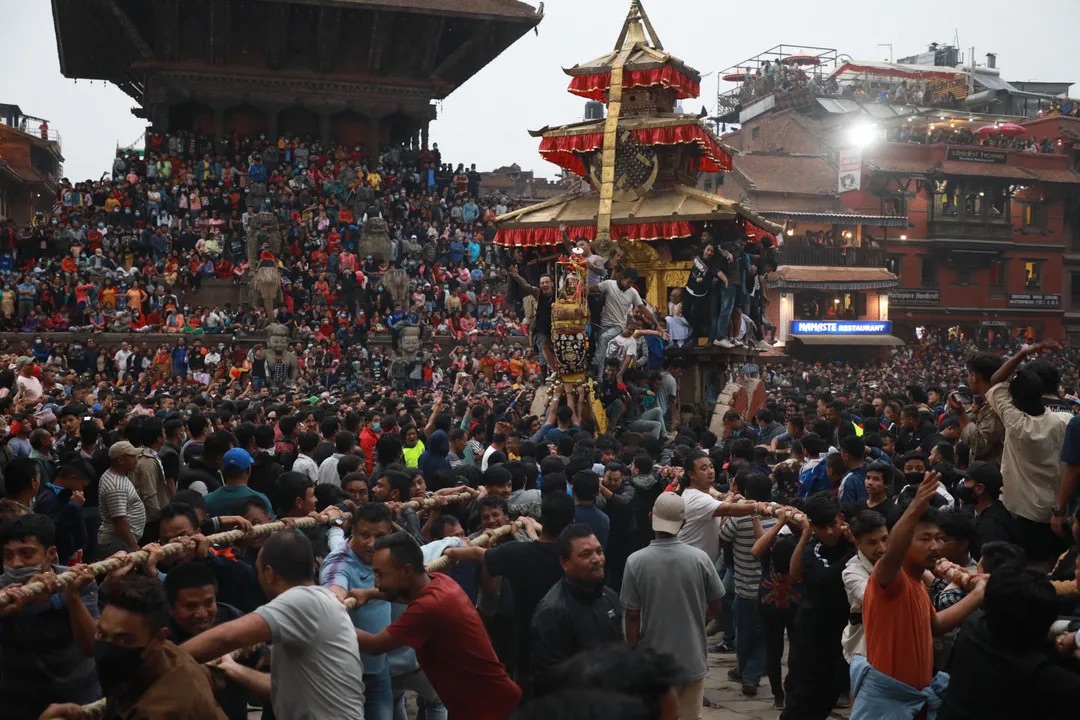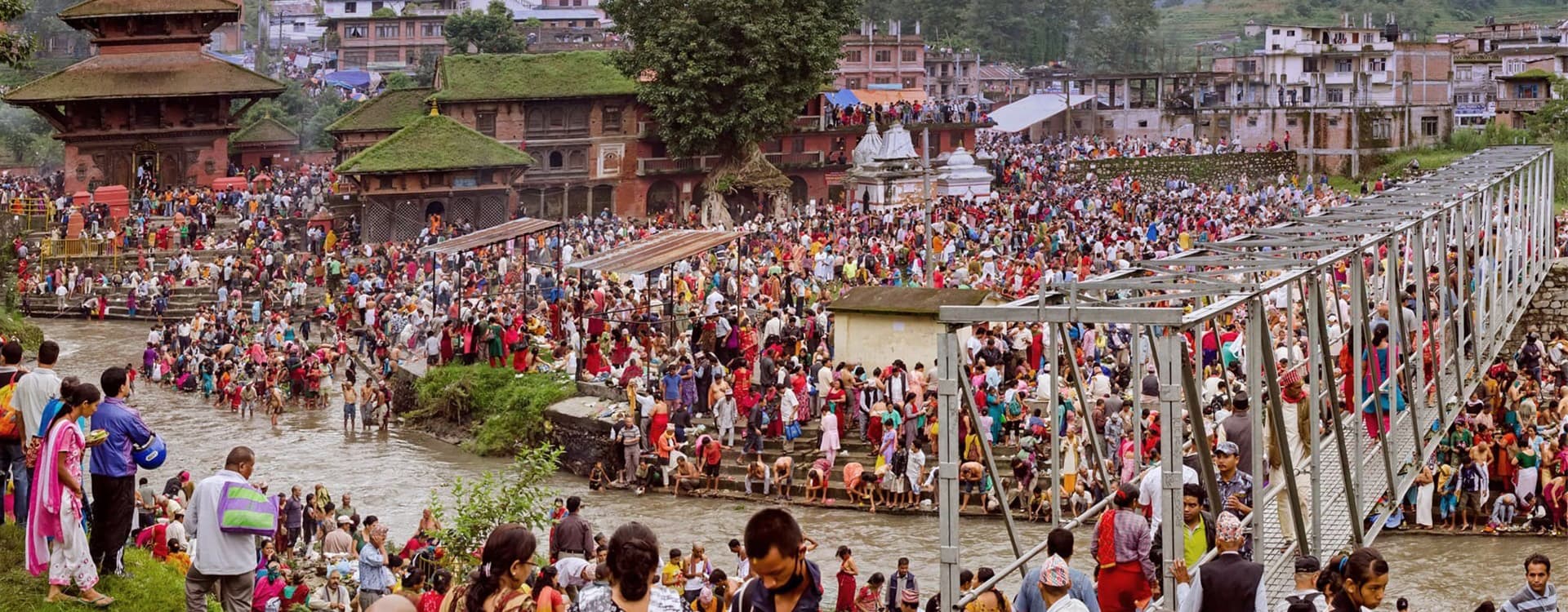Nepal, the land, holds ancient traditions, a colorful culture, and divine energies that burst into life throughout innumerable festivals along the enchanting trails. High-altitude mountain villages and Kathmandu's vibrant and colorful alleys: the handicraft region of Nepal engages and mesmerizes travelers for deeper exploration than the handicrafts.
While trekking, spiritual absolution, or culture trekking, each trek will take your breath away during the festivals. Festivals in Nepal are not just celebrations; they bind, beautify, and transform. Festivals are the way in for Nepali culture, Hinduism, and Buddhist ceremonies and values, primarily imbued with gratitude, respect, and joy.
This guide will dwell on festivals, from glorious Tihar onwards through wild, kaleidoscopic Holi, and sacred blessings of Dashain. It will give insider tips on how to enjoy each festival like a local, personal dress recommendations, behavioral considerations, and where to be to enjoy the most authentic experiences.
Culture-hungry people, photographers, and dainty souls can go through the history of a majestic travel festival throughout Nepal.
Why Festivals Matter in Nepal
Festivals are celebrations held in Nepal that are more than celebrations; they are at the very heart of Nepali culture, tradition, and spirituality. From the majestic Himalayas to the busy streets of Kathmandu, festivals rejuvenate families through customs and traditions two to three thousand years old, connecting communities from something made sacred to something fun.
In Nepal, with some exceptions, all the festivals somewhat follow practices based on Hinduism and Buddhism, with ethnic, local inputs here and there. All festivals, hence, can be stated to be dependent on the lunar calendar, i.e., there must be some variation every year. There are festivals completed in one day, and there are festivals that are held for days or weeks, varying in activities from religious observance and temple ritual to street processions or parades, mask dancing on grounds of culture, and great theatrical presentations.
For travelers and culture lovers alike, these festivals constitute a remarkable time when traditions within society shed light on the country's spiritual and social heartbeat. These occasions are no stage-managed performances for tourists but rather the unfettered life of a typical Nepali. Lighting oil lamps in Tihar, throwing colored powders in Holi, or dragging floats in Bisket Jatra are events that occur during times when participating respectfully gets you real access into the culture with locals.
Why You Should Attend Cultural Festivals in Nepal:
- Notice the authentic, first-hand cultural revelation. The festivals are a revelation of Nepali customs, traditional dress, local music, and food.
- Significance: Most festivals are about gods or spirits or ancestors, and that also reveals many of the aspects of spirituality that the Nepalese have in their culture.
- Relationship: By joining a celebration of a local family or attending a small event in a village, you are suddenly within the wide Nepali community.
- A Dream Place for a Photographer: With all the color and action, and deep feelings, these festivals provide great opportunities for narrators and scene makers.
Major Festivals in Nepal
The calendar for Nepal is crammed with festivals whose very names denote the cultural mosaic, religious sentiment, and community bonds that bind the people together. From mighty Hindu rituals to colorful Buddhist celebrations to ethnic celebrations for the New Year/Naya Barsha, each one provides a fair insight into the Nepali soul. Here is a guide to some of the major festivals in Nepal that you must experience at least once.
Dashain: The Biggest Festival in Nepal

Dashain is the longest and most comprehensive of all Hindu festivals of Nepal, lasting 15 days, usually in September or October. It commemorates the triumph of goddess Durga over demon Mahishasura, and in a similar vein, the emblems of the festival celebrate the triumph of good over evil. Cleaning, decorating houses, donning new clothes, and preparing scrumptious dishes are what families all over the country do. Tika (a red mixture of yogurt, rice, and vermilion) and jamara (barley sprouts) are bestowed by the elders on the 10th day, called Vijaya Dashami, upon such younger members to bless them for future wealth and longevity.
In villages, buffaloes and goats are offered to Durga as an offering. The carnival-like atmosphere is filled with bursting delight, flying kites, bamboo swings (ping), and reunions of extended families. It is the grandest festival of all for Nepalese at home, and it is when most Nepalese who live abroad return to their homeland to celebrate.
Tihar: The Festival of Lights and Animals

Whereas Dashain is only celebrated for the goddess Durga, Tihar is celebrated for the animals, gods, and between brothers and sisters. It occurs in October/November and is a 5-day Hindu festival. Also known as Deepawali in many parts of South Asia, Tihar celebrates several days as follows:
- Day 1: Kag/Crow Tihar: The crows are worshiped as the messengers of death. Offerings so they will not mourn in sorrow or misfortune.
- Day 2: Kukur Tihar: The day of honoring dogs—the symbol of loyalty and protection. Dogs were garlanded and covered with tika, as well as delicious food.
- Day 3: Gai Tihar & Laxmi Puja: Morning honors cows as a symbol of prosperity and further incarnation of motherly love. While oil lamps are lit in the homes for Laxmi Puja in the evening, it is not the embodiment of wealth, Lakshmi, but the goddess of wealth herself who is being worshiped.
- Day 4: Diverse Communities: They pray to the ox (Govardhan Puja), which is strength and agriculture, while others are celebrating the empowerment of themselves or praying to their tools and profession.
- Day 5: Bhai Tika: A single day of unparalleled celebration for the fantastic brother-sister relationship. Sisters will apply a vermilion tika on the brother's forehead, offer flower garlands and food, and wish them a long life and prosperity.
The house is decked out during Tihar with diyo (oil lamps), rangoli patterns, and flowers. Deusi-Bhailo singing is one of the famous activities performed by children in return for gifts and sweets. The festival essentially brings forth the light from darkness and love among all beings.
Holi: The Colors Festival

It is the festival that officially welcomes the season of spring from March, known as the festival of bright colors. Find extreme Hindu significance in it: the victory of good (Prahlad) over evil (Holika); also, the ecstatic celebration of divine love, Radha-Krishna. In two days, Holi is celebrated all over Nepal, such as in the hill district of Kathmandu during the first day and the continuation in the Terai southern plain the following day.
Powdering one another with color and showering water on the roads brings together people who listen to traditional and modern music during Holi celebrations. It is most seen in places like Thamel, Basantapur, or Lakeside at Pokhara, where tourists and locals come out and celebrate together. The gujiya (sweet dumplings) and the bhang drink (not so much celebrated) form just a tiny fraction of the larger celebratory event. Check this out, should you want to enjoy the more playful and socially mundane aspects of this great country, claimed to be Nepal.
Indra Jatra: A Sacred Street Festival for Kathmandu
One of the oldest and most important festivals for Indra Jatra in September is that of Kathmandu. It is dedicated to Indra, the Hindu god of rain and king of heaven. The most important ceremony of the eight-day festival is celebrated mainly by the Newar community: the Kumari's public appearance. She is driven around town in a beautiful chariot, still very much drawing crowds along Kathmandu's narrow streets.
Kathmandu Durbar Square comes alive amidst a timed chaos as masked dances, traditional music, dramatic acts, and performances herald the Lakhe dance, the arrival of a red-faced demon character who energizes his way through the city's thoroughfares. Tall wooden poles called Yosin (lingams) are raised, symbolic of the God Indra. Indra Jatra is, therefore, also culturally a magnificent spectacle on top of being a religiously significant occasion.
Gai Jatra: The festival of cows and humor

Seen in August, it is a celebration unique among Newar groups of people within the Kathmandu Valley, specifically those of Bhaktapur, Patan, and Kathmandu. According to tradition, families who had lost a family member in the previous year would take a cow or a child dressed in a cow disguise, since the cow leads spirits of the dead to heaven.
Gai Jatra possesses a very unique nature insofar as it brings together grieving and revelry. Their street performances by artists lampoon social as well as political issues, infusing humor with insight. Getting to become goofy in attire, putting on shows, and making the atmosphere cheerful for the bereaved families are what these actors accomplish. All of this is meant to be an emotional epic full of color and culture, a full expression of Nepal's philosophical acceptance of death and life.
Bisket Jatra: Nepali New Year Festival

Bisket Jatra is a trumpet New Year/Naya Barsha celebration at the time of sprouts in April in Bhaktapur specifically. While the event mainly consists of pulling huge wooden chariots carrying images of local deities through narrow streets with opposite ends, it evokes a different scene, from casual fun to tug-of-war.
Symbolic rituals such as raising the Yosin pole and tongue piercing among some communities are included. Drums, dance, and traditional songs echo in the atmosphere. Bisket Jatra is not merely the new year; it is a clever blend of myth, competition, and piety.
Losar - The New Year Celebrated by Tibetans and Ethnicities
Losar, the Tibetan and ethnic New Year, is the New Year festival of the Tibetan Buddhists and different ethnic groups of Nepal, mainly Sherpa, Tamang, Gurung, and Magar. It is celebrated in February when the Tibetan natural year begins.
As Buddha's rituals transform into cultural dances and family gatherings.
At Boudhanath Stupa, the Losar festival would involve the performance of monk dances (Cham dances), the lighting of butter lamps, and prayers. During this, people visit monasteries after the cleaning of homes in preparation for making special delicacies such as khapse (deep-fried dough pastries) and chyang (barley beer). A time for renewal, reflection, and social bonding, especially in the highland parts of Nepal.
Maghe Sankranti: The Festival of Warmth and Health
Maghe Sankranti is celebrated on 14th January in honor of the winter solstice. From that date onward. It signifies purification of the soul, health-related rituals, and care of agro-life. The festival is of greater significance to the Tharu community as well as to people of the Terai and hill tracts.
The families take a sacred bath at rivers such as the Bagmati River and take along some symbolic foods such as til ko laddu (sesame sweets), ghee, molasses, and yam, which are thought to heat the body and enhance immunity. Maghe Sankranti, while relatively less decorative than other festivities, is extremely religious for tens of millions of Nepalese.
Maha Shivaratri - The Night of Shiva

Considered to be the biggest festival in Nepal among major national festivals, Maha Shivaratri is celebrated in February or March in honor of Lord Shiva. Major festivities at the Pashupatinath Temple in Kathmandu see the arrival of thousands for a night of fasting, chanting, and prayer. Om Namah Shivaya fills the temple complex as lights emanate from bonfires and oil lamps.
On this special night, the numerous sadhus are religious practitioners of Hinduism, often with their bodies smeared with ash, who will meditate or perform rituals the whole night, believing that remaining awake throughout this particular night will confer upon them blessings and spiritual attainments for the rest of their lives. That gives engaged living persons a peek into the highly immersive realm of spiritual practices and the rich temple culture of Nepal.
Planning to Visit a Festival in Nepal?
They are some of the many things that make Nepal so much more colorful, the festivals. They are really so colorful, meaningful, and full of tradition.
- Check dates ahead of time:
Most of the festivals observed in Nepal are based on the lunar calendar, and hence, these continue to vary every year. Therefore, check with any local contacts or an updated Nepali calendar before finalizing your trip.
- Dress modestly and respectfully:
For any religious holiday, actually, for any holiday, it is advisable that you should dress in a way that your knees and shoulders are covered. Don't forget to ask about the local dress, though, as it would be a pleasure if you were traveling with natives.
- Seek permission to take photos:
Most festivals are sacred, so although they are quite often very beautiful, always ask before taking shots of people, rituals, or sacrosanct places.
- Accept Invitations:
If you are invited by a local to come to a celebration, be gracious and agree. Nepali hospitality is all warm and generous, and by this, you can simply become part of one family's or community's celebration and experience the culture in an authentic way.
How to Experience Like a Local
- Stay with a Local Family (Homestays)
What better way to experience a festival than by staying in a Nepali homestay? You will be there during the preparation of traditional meals, creating rangoli, or maybe decorating. It's a warm, personal window into daily life.
- Learn a Few Nepali Words
"Namaste" could stand for hello, "Dhanyabad" for thank you, and "Ramailo chha" means it's fun. Simple phrases can cut through cultural barriers, making you seem less of a tourist.
- Eat as Locals Eat
Special dishes are sel roti, goat curry, yomari, and bara, family-made during festivities. Don't be shy, taste everything! It is massive hospitality for Nepali celebratory food.
- Join the Rituals (With Respect)
"Follow the locals"-what they do during that time of Dashain when they're putting on the tika, dancing on the street during Holi, or turning on the lights during Tihar with oil lamps. Ask if such activities can include them, then do it with proper intimate reverence.
- Buy Your Festival Stuff Locally
Instead of buying colors, kurtas, or offerings from tourist shops, buy them from the local markets. You'd be doing your bit for small businesses and would find more genuine stuff for your festival experience.
- Celebrate With Heart and Not Just Through a Camera
Click away at times, but then put the camera down. Listen to those musical notes and feel the energizing ambiance created through the festival. That's where the real magic unfolds.
Conclusion
There are colorful festivals in Nepal, but these aren't just colorful festivals; every fest is teeming with spirituality, society, and age-old customs. Whether there is throwing colors during Holi, lighting oil lamps during Tihar, or observing holy rituals during Shivaratri, every fest lingers long to touch Nepali culture's heart.
The biggest gift you can give or receive as a traveler is to experience from the locals the attitude that entering into most things not simply as a visitor but also as a participant is the greatest gift you can give or receive. Whether in the mountain villages or vast city squares, each festivity is an opportunity to feel the very soul of Nepal with open eyes, open hands, and open hearts, while producing memories that will last a lifetime.
FAQs
When should I visit Nepal to enjoy the festivals?
The months from October up to March are said to bring major festivals like Dashain, Tihar, Holi, Shivaratri, and Losar for the best experience of visiting and enjoying major Nepalese festivals. However, you can find a festival at any time of the year. Some contain something to be seen.
Do I have to organize my travels around the lunar calendar?
Yes, they change dates since almost all the festivals celebrated in Nepal and other parts of the country are according to their Hindu or Buddhist lunar calendar. Refer to a Nepali festival calendar or ask locals for the change dates.
Can tourists participate in the festivals of Nepal? Definitely! The tourists are permitted to participate in most events of the residents, but with special focus on Holi, Tihar, Indra Jatra, and Bisket Jatra. Just keep in mind to be respectful of local traditions, and if in doubt, just ask.
What would I wear to attend a festival in Nepal?
Dressing modestly should apply to whatever you wear. When attending religious festivals, keep your shoulders and knees covered. Old clothes that might get stained are also welcome at bright rainbow festivals such as Holi. Respectful dressing is appreciated by the locals, and trying out their attire is even better!
Is it okay to take photographs during the festivals?
Yes, that goes without saying, but ask first, especially in the temple, during sacred rituals, or when photographing people. Some events might not allow photographs at all, so observe before you click.
What is the most important festival in Nepal?
Dashain is the most widely celebrated and the biggest festival in Nepal. It runs for 15 days and symbolizes the victory of good over evil; it carries great significance in family, spiritual, and cultural terms.
Are there festivals indigenous to Kathmandu and the regions?
Yes! Indra Jatra and Gai Jatra are unique to selected celebrations in the Kathmandu Valley, where they are largely celebrated. The subject is Newar culture. The most famous festival in Bhaktapur is Bisket Jatra.
Is it safe for anyone to go to big festivals in Nepal?
Generally, yes. The family nature of Nepali festivals is welcoming, and however, the crowd seems to take on a large formation when there. Keep your stuff safe, keep hydrated, and follow local advice for a smooth finish.
In what way can I experience a festival as a local?
Find a homestay, sample some local foods, respectfully participate in the rituals, and learn a few words in Nepali. This will build your cultural connection and ensure your memories will last forever.

